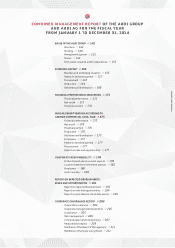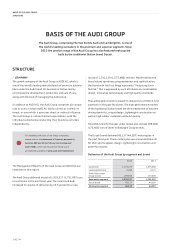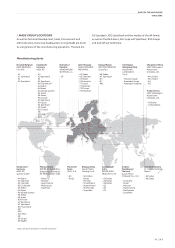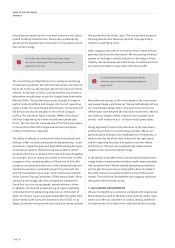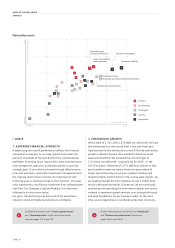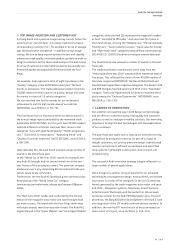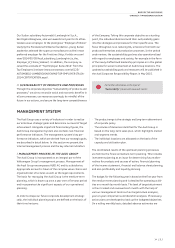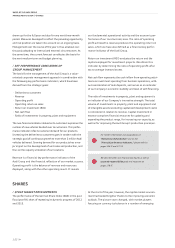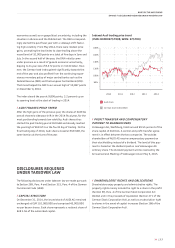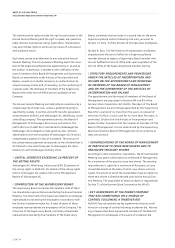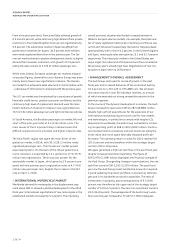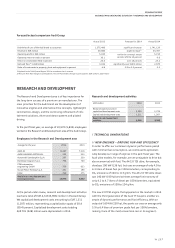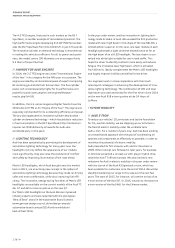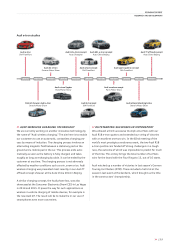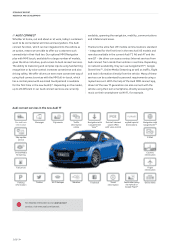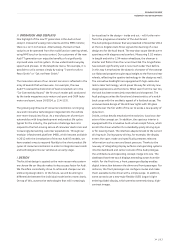Audi 2014 Annual Report Download - page 151
Download and view the complete annual report
Please find page 151 of the 2014 Audi annual report below. You can navigate through the pages in the report by either clicking on the pages listed below, or by using the keyword search tool below to find specific information within the annual report.
BASIS OF THE AUDI GROUP
STRATEGY // MANAGEMENT SYSTEM
>>
151
Our Italian subsidiary Automobili Lamborghini S.p.A.,
Sant’Agata Bolognese, also won awards last year for its attrac-
tiveness as an employer. In the prestigious “Employer of Choice”
study by the Fondazione Emblema foundation, young Italian
academics selected the supercar manufacturer as their most
preferred employer for the first time (http://article.wn.com/
view/2014/05/05/Audi_subsidiary_Lamborghini_is_the_
Employer_of_Choice_Volksw/). In addition, the company re-
ceived the accolade of “Top Employer Italia 2014” from the
Top Employers Institute (www.conceptcarz.com/a6125/
AUTOMOBILI-LAMBORGHINI-EARNS-TOP-EMPLOYER-ITALIA-
2014-CERTIFICATION.aspx).
//
SUSTAINABILITY OF PRODUCTS AND PROCESSES
Through the corporate objective “Sustainability of products and
processes,” we aim to reconcile social and economic benefits in
all core processes, use resources sparingly, be mindful of the
future in our actions, and secure the long-term competitiveness
of the Company. Taking this corporate objective as a starting
point, the individual divisions build their sustainability goals
into the strategies and processes for their specific area. The
focus throughout is on reducing COĊ emissions from both our
products themselves and production processes. In the period
under review, the sustainability goal was also operationalized
with regard to employees and society, for example in the form
of the newly drafted Audi leadership principles or in the global
principles for social involvement at Audi Group locations. The
updated sustainability goals and measures will be published in
the Audi Corporate Responsibility Report in May 2015.
For further information on the topic of
“Sustainability,” please visit www.audi.com/cr.
MANAGEMENT SYSTEM
The Audi Group uses a variety of indicators in order to realize
our ambitious strategic goals and determine our level of target
achievement. Alongside important financial key figures, the
Audi Group management system also contains non-financial
performance indicators. The management system’s key per-
formance indicators, which are derived from our strategic goals,
are described in detail below. In this section we present the
internal management process and the key internal indicators.
/
MANAGEMENT PROCESS IN THE AUDI GROUP
The Audi Group is incorporated as an integral part of the
Volkswagen Group’s management process. Management of
the Audi Group encompasses AUDI AG and its subsidiaries.
Appropriate account is taken of the complex value chains and
organizational structures as well as the legal requirements.
The basis for managing the Audi Group is the medium-term
planning, which is drawn up once a year over a five-year period
and incorporates the significant aspects of our operational
planning.
In order to shape our future corporate development strategi-
cally, the individual planning topics are defined on the basis of
their time horizons:
>The product range is the strategic and long-term determinant
of corporate policy.
>The volume of deliveries identified for the Audi Group is
based on the long-term sales plan, which highlights market
and segment trends.
>The individual locations are allocated on the basis of the
capacity and utilization plan.
The coordinated results of the upstream planning processes
are fed into the financial medium-term planning. This includes
investment planning as an input for determining future alter-
natives for products and courses of action, financial planning
of the income statement, financial and balance sheet planning,
and also profitability and liquidity planning.
The budget for the following year is based on the first year from
the medium-term planning and is detailed for operating activi-
ties on a month by month basis. The level of target attainment
is then tracked and reviewed each month with the help of
various management tools such as target/actual analyses,
year-on-year comparisons and deviation analyses. If necessary,
action plans are developed to back up the budgeted objectives.
On a rolling monthly basis, detailed advance estimates are


